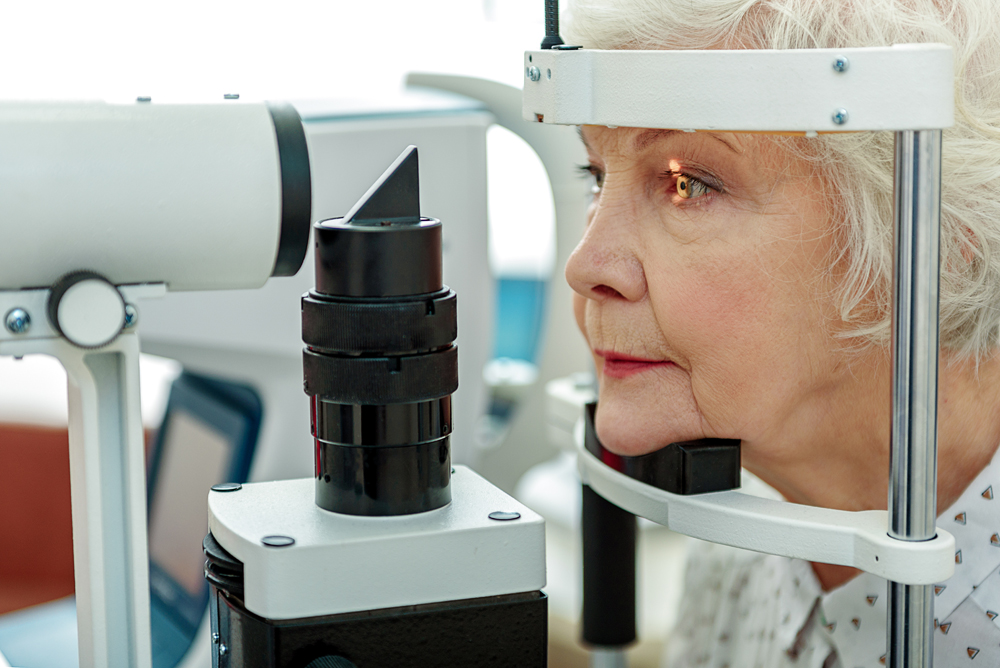Cataracts Care at Our San Antonio Optometry Center
Vision is a coordinated effort between the eyes and the brain, which means that the brain’s vision center can only process the information it’s receiving. Cataracts place a physical barrier between these mechanisms and the world around you. This clumping of proteins in the lens of the eye blocks incoming light and obscures your eyesight. Luckily, modern optometry offers options for compensating for, or even removing, cataracts. We’re proud to provide San Antonio cataract care here at The Vision Place.

Office Hours & Info
- Monday
- 9:00am - 5:30pm
- Tuesday
- 9:00am - 5:30pm
- Wednesday
- 9:00am - 5:30pm
- Thursday
- 9:00am - 5:30pm
- Friday
- 9:00am - 5:00pm
- Saturday
- By Appointment
- Sunday
- Closed
- 16530 Huebner Rd. Ste 101
- San Antonio, TX 78248
Call or Text: 210-764-1113
Email: visionplace@sbcglobal.net
Cataracts Care at Our San Antonio Optometry Center
Vision is a coordinated effort between the eyes and the brain, which means that the brain’s vision center can only process the information it’s receiving. Cataracts place a physical barrier between these mechanisms and the world around you. This clumping of proteins in the lens of the eye blocks incoming light and obscures your eyesight. Luckily, modern optometry offers options for compensating for, or even removing, cataracts. We’re proud to provide San Antonio cataract care here at The Vision Place.

The Veiled Vision of Cataracts
Left untreated, cataracts can eventually lead to blindness; in fact, they’re a leading cause of blindness worldwide. Your eyes’ lenses normally contain proteins arranged in such as way that incoming light passes between them easily. But if these proteins lose this delicate arrangement and form solid clumps, they act as a filter that blocks out some of that light, creating a cloudy white pattern on the lens. As a cataract develops, you may experience blurred or low vision, increased glare sensitivity, reduced nighttime and color vision, and the appearance of halo-like auras around individual light sources.
Different types of cataracts may stem from different causes. Most nuclear cataracts, which form at the front center of the lens, are related to aging, smoking, and UV exposure. Subcapsular cataracts (which begin at the back of the lens) and cortical cataracts (which work their way from the outer edge inward) may be associated with steroid use and diseases such as diabetes.
Cataract Treatment with Our San Antonio Eye Doctor
Our optometrist, Dr. Palomino, can help you manage your cataract issues, starting with regular eye exams that can detect the earliest signs of their development. Your vision may be largely unaffected for years if you have typically slow-growing cataracts. during this period, Dr. Palomino can compensate for minor vision changes by prescribing corrective lenses with anti-glare tints or coatings. We’ll also recommend UV-blocking sunglasses and lifestyle changes (such as smoking cessation) to help slow the progress of the cataracts.
Despite everyone’s best efforts, cataracts sometimes reach the point where corrective lenses can no longer make up for the vision loss. If this happens, we can refer you to an eye surgeon for a procedure to replace that cloudy lens with a clear plastic one. Our optometrist will provide all the necessary pre-operative and post-operative care to guide you through a successful surgery and recuperation.
Contact The Vision Place in San Antonio, TX!
Contact our optometrist at The Vision Place in San Antonio to make an appointment for an assessment of your eyes. Call our office today at 210-764-1113 to find out more information.
Office Hours & Info
- Monday
- 9:00am - 5:30pm
- Tuesday
- 9:00am - 5:30pm
- Wednesday
- 9:00am - 5:30pm
- Thursday
- 9:00am - 5:30pm
- Friday
- 9:00am - 5:00pm
- Saturday
- By Appointment
- Sunday
- Closed
- 16530 Huebner Rd. Ste 101
- San Antonio, TX 78248
Call or Text: 210-764-1113
Email: visionplace@sbcglobal.net

